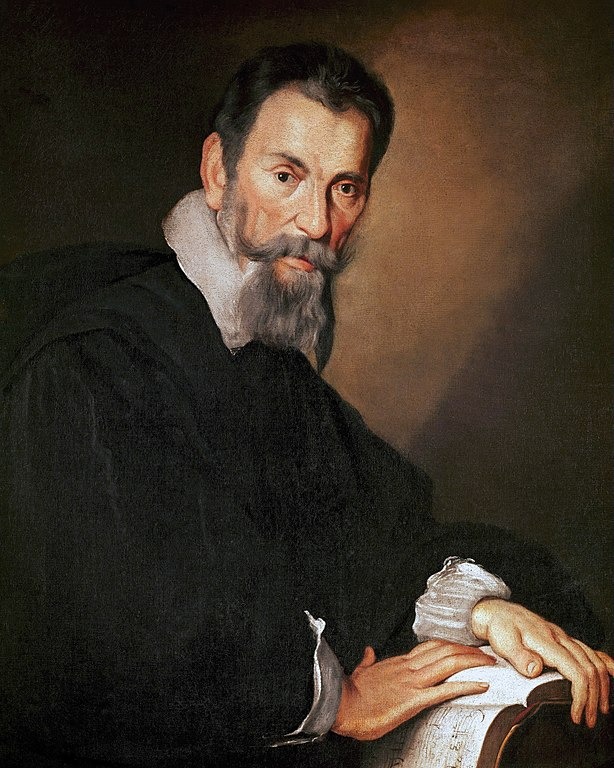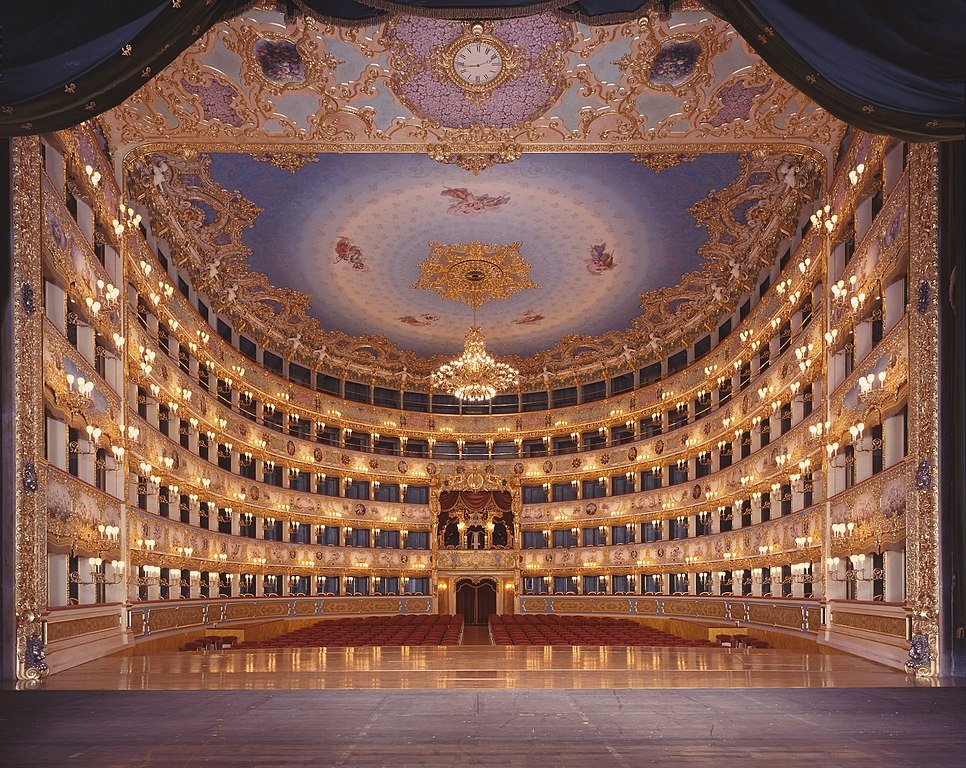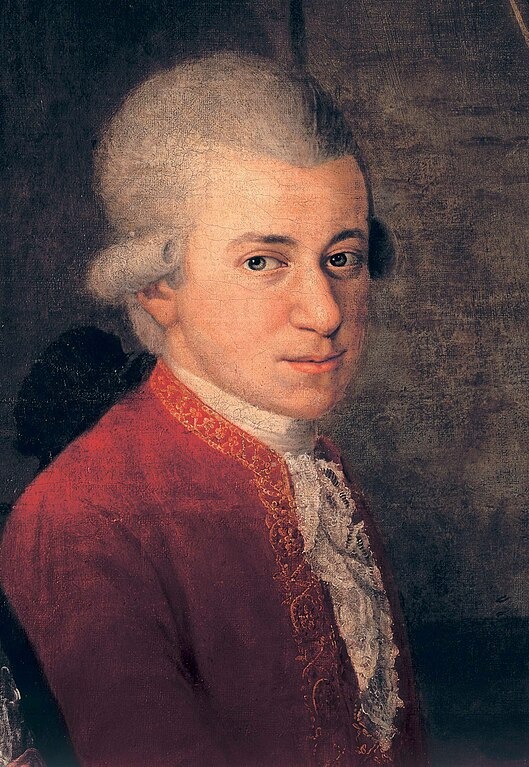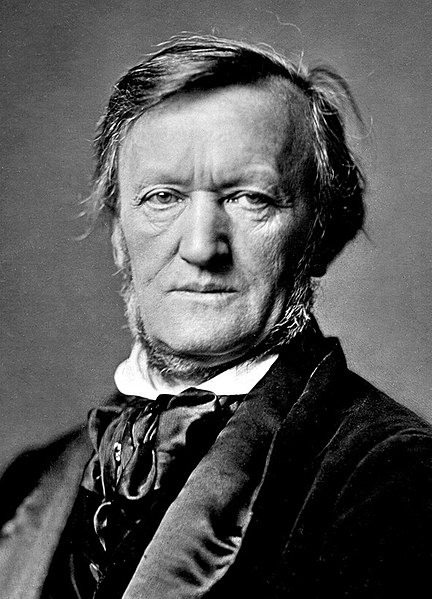Opera is an art form that combines acting and music, and sometimes also dance, with performers taking on dramatic roles. Its name comes from the Latin and Italian word “opera”, meaning work, and indeed this form of theater originated in Italy and it is a key aspect of Italian tradition. Over time, opera evolved to include numerous genres and expanded to all of Europe, and later around the world.
Opera has its roots in classical Western theater, as dramatic representations accompanied by music were already performed in ancient Greece. Western theater evolved during the Middle Ages, and various genres developed in the Renaissance, while similar art forms also emerged in other parts of the world such as Japan and China. Modern opera originated in Florence at the end of the 16th century from a group of humanists known as the Camerata de’ Bardi, who gathered to discuss music and drama starting in 1573. While studying ancient Greek theater, they found that Greek performances put a focus on individual voices, while Renaissance theater was almost entirely choral. Some scholars, such as Vincenzo Galilei, father of the scientist Galileo Galilei, proposed to replace polyphony with a vocal style featuring a single melodic line, which became known as monody.
One of the members of the Camerata de’ Bardi, Jacopo Peri, created Dafne in 1598, a work based on the myth of Apollo and Dafne, and regarded as the first modern opera. Despite the importance of this work, only some fragments of the music are preserved to this day. In 1600, Peri wrote another work inspired by Greek mythology, Euridice, which is the earliest surviving opera. This was followed two years later by an opera with the same name by another member of the Camerata de’ Bardi, Giulio Caccini. Caccini is also known for writing the first treatise on the new genre, called Le Nuove Musiche (“The New Musics”) and published in 1602. His daughter, Francesca Caccini, was the first woman to compose an opera when she wrote La Liberazione di Ruggiero dall’Isola d’Alcina in 1625. According to some sources, this might also be the first opera performed outside of Italy.
The new genre was an immediate success thanks to its many novelties, such as a focus on secular themes instead of religious ones, and the use of monody. Opera quickly spread from Florence to all of Italy, with noble families such as the Medici and Gonzaga becoming patrons of these performances. Another revolution came in 1607, when the Gonzaga of Mantua commissioned composer Claudio Monteverdi to write an opera, called L’Orfeo. Monteverdi introduced many defining elements of modern opera, such as a musical introduction that he called “symphony”, the division of sung parts into “arias”, and the repetition of an instrumental section known as “ritornello”. Monteverdi later worked mainly in Venice and went on to compose several other operas, such as Il Ritorno d’Ulisse in Patria (1639) and L’Incoronazione di Poppea (1643). While most of his works are now lost, Monteverdi is regarded as one of the most influential figures in the history of Western music and theater.
Claudio Monteverdi in a 17th-century painting by Bernardo Strozzi.
Over the course of the 17th century, opera began to include religious themes and comic elements, and the first schools of opera composers started to emerge in Italy, especially in Rome. Opera developed at the same time as Baroque music, and many 17th-century works featured typical Baroque elements, such as ornate scenography and a more complicated structure. During this time, the most important center for opera was Venice. In 1637, the Teatro San Cassiano in Venice became the first public opera house in the world, ending an era in which music was only performed for aristocrats and for religious purposes. With its opening to the public, opera became a business, and started to be influenced by the tastes of the audience, which resulted in more comic elements and simpler texts. The leading figure of Venetian theater in the mid 17th-century was Francesco Cavalli, a disciple of Monteverdi.
Around the same time, opera started to be performed in France, where it caused a great sensation. Italian composer Giovanni Battista Lulli moved to France, where he took the name Jean-Baptiste Lully, and adapted Italian opera to French taste. His style, called tragédie en musique (“musical tragedy”), included choirs, ballet, musical interludes, and shorter arias. Meanwhile, opera also spread to Germany, Austria, England, Poland, and Spain, sometimes intermixing with local musical traditions. This happened especially in Spain, where Italian opera and traditional songs merged in the genre of zarzuela, which remained popular well into the 20th century.
However, Italy remained the major opera-producing center, and in the second half of the 17th century Naples emerged as one of the main hubs for this style of theater. Flourishing between the end of the 17th century and the first half of the 18th century, the Neapolitan School featured operas with simpler plots but more sophisticated themes. Naples also saw the inauguration of the Teatro di San Carlo in 1737, which is the oldest continuously active venue for opera in the world. The most notable representative of this school was Alessandro Scarlatti, who introduced numerous novelties which influenced the evolution of opera in the following decades.
One of the main contributions of Scarlatti and the Neapolitan School was the development of opera buffa (“comic opera”), a genre that focused on everyday settings, local dialects, and comic themes, influenced by an Italian form of theater known as commedia dell’arte (“comedy of the profession”). In contrast to this style, the genre of opera seria (“serious opera”) focused mainly on classical mythology and virtuous heroes. The disappearance of comic characters from this style led to the introduction of intermissions during the plays, called intermezzi. A comic intermezzo that later became the standard model for the genre of opera buffa is La Serva Pardona (1733), composed by Giovanni Battista Pergolesi. Over time, elements of both opera buffa and opera seria merged into new genres called opera semiseria (“semi-serious opera”) and dramma giocoso (“drama with jokes”).
Venice and Naples remained the major centers for opera during the 18th century. The most notable composer in Venice was Antonio Vivaldi, who is best known his series of violin concertos The Four Seasons, but also worked on more than fifty operas. Another important figure of Venetian theater during this time was Carlo Goldoni. A playwright and librettist, Goldoni mostly worked on comedies, but also wrote several operas. Another important librettist was Pietro Metastasio, who was one of the main figures in the genre of opera seria, and worked mainly in Rome and Naples, before moving to Vienna.
The split between opera buffa and opera seria, which began in Naples, spread all over Europe in the 18th century. The quarrel between the two styles was especially heated in France, where Jean-Philippe Rameau was one of the most important composers of the time, and an advocate of opera seria. Opera buffa was instead supported by philosopher Jean-Jacques Rousseau, who was also a composer. The Italian opera buffa evolved into the French opéra comique, which became a prominent genre in the late 18th and early 19th century.
German opera instead followed the Italian style more closely, and most works were written in Italian. This was the case also for the most notable German composer of the time, Georg Friedrich Händel. Händel focused on ancient history and mythology, and composed numerous opere serie, including Rinaldo (1711), Giulio Cesare in Egitto (1724), Orlando (1733), Alcina (1735), and Serse (1738). He mainly worked in England, and later began composing operas in English, influencing the evolution of the genre in the country. Some pieces by Händel, such as the aria Lascia Ch’io Pianga from Rinaldo, are still well-known to this day.
Georg Friedrich Händel in an 18th-century painting by John Theodore Heins.
English opera struggled to create a distinct style, and the operatic scene was dominated by Händel and the Italian style. Over time, the English public became tired of Händelian operas, and this led to the success of The Beggar’s Opera (1728) by German composer Johann Christoph Pepusch. This work, a satire of the Italian opera seria, sparked a new genre of comic opera in England, called ballad opera. Meanwhile, the operatic scene in other European countries was still mostly dominated by Italian composers and singers moving abroad.
A new style began to develop in Germany towards the end of the 18th century, as some scholars became critical of opera seria and Baroque music. One of these was Christoph Willibald Gluck, who revolutionized the struggling genre of opera seria with simpler plots and more equilibrium between musical sections and sung parts, creating works such as Orfeo ed Euridice (1762), Alceste (1767), and Iphigénie en Tauride. (1779). At the same time, this was the golden age of singspiel, a genre of German opera that included comic or romantic plots, with elements of magic and fantastical creatures.
These styles influenced the evolution of opera towards Classicism, a genre of theater and music that focused on balance and serenity, seeking beauty and perfection. Opera was really popular during this period between the late 18th and early 19th century, and some of the most important theaters in the world today were inaugurated in this time, such as La Scala in Milan and La Fenice in Venice.
Interior of La Fenice in Venice seen from the stage (Pietro Tessarin, Wikimedia Commons, CC BY-SA 4.0).
The main composers during this time were Franz Joseph Haydn, Wolfgang Amadeus Mozart and Ludwig van Beethoven. Haydn is regarded as the father of modern symphony, and while he mostly focused on chamber music, he also composed several operas. He was a friend and mentor of Mozart, who was a child prodigy and toured Europe, becoming acquainted with several different styles at a young age. He gained international recognition in his adolescence, thanks to works such as the singspiel Bastien und Bastienne (1768) and the opere serie Mitridate, Re di Ponto (1770) and Idomeneo (1780).
After the success of Idomeneo, Mozart moved to Vienna, where he spent most of the rest of his life. Mozart achieved a lot of success by breaking the traditional structure of operas and introducing new musical styles in works such as the singspiel Die Entführung aus dem Serail (1782). Over the following years, Mozart composed some of the most famous operas of all time, the most notable being The Marriage of Figaro (1786), Don Giovanni (1787), Così Fan Tutte (1790), and his last work The Magic Flute (1791), regarded as the greatest masterpiece of the singspiel genre.
Wolfgang Amadeus Mozart in a painting from around 1780 by Johann Nepomuk della Croce.
Similarly to Mozart, Beethoven was also one of the most important figures in Western music, and influenced the evolution from Classicism to Romanticism. While very proficient in musical compositions, he only wrote one opera, Fidelio, which premiered in 1805. Various Italian composers achieved a lot of success during the Classical era, such as Giovanni Paisiello, Domenico Cimarosa, and Niccolò Antonio Zingarelli. The most notable Italian composer of the time was Antonio Salieri, who mainly worked in Austria and heavily influenced the musical scene in Vienna.
Opera in the 19th century reflected the evolution of Western society, as composers and performers became increasingly independent from the aristocracy and the Chruch, creating works directed to the common people. Most of the century was dominated by Romanticism, a style that focused on emotions and passion, emphasizing individuality and the heroic actions of humans, rather than mythological figures. Romanticism also included elements inspired by nature, and featured new instruments, with larger orchestras and stages.
This style, known as grand opera, first emerged in France, where opera seria, opera buffa, and the reforms of Gluck tended to merge. The first exponents of French Romantic opera were two Italians: Luigi Cherubini and Gaspare Spontini, both regarded among the greatest composers of the time. Robert le Diable by Giacomo Meyerbeer, which premiered in Paris in 1831 is regarded as the first grand opera, and was an immediate success thanks to its magnificence. One of the most popular and spectacular examples of grand opera is another work by Meyerbeer, Les Huguenots (1836).
Meanwhile, Romanticism in Italy was marked by a nationalist component that mixed with the Risorgimento, the social and political movement that aimed to unify the Italian peninsula into a single country. The greatest Italian composer of the first half of the 19th century was Gioachino Rossini, who included in his works elements of Classicism and Romanticism. Among his most notable works is The Barber of Seville (1816), often regarded as one of the greatest opere buffe of all time. He also composed numerous serious works, the most famous being William Tell (1829), his last opera before his retirement.
Other notable figures in Italian opera around the same time were Vincenzo Bellini and Gaetano Donizetti. Along with Rossini, they are regarded as the main composers of the bel canto (“beautiful singing”), a style that focused more on singing voices rather than the orchestra. A notable example of bel canto is Norma (1831) by Bellini, his best-known work. After the retirement of Rossini and the death of Bellini, Donizetti emerged as the leading figure in Italian theater, especially after the success of Lucia di Lammermoor (1835), a popular work influenced by French grand opera.
The next generation, known as Late Romanticism, saw the rise of some of the greatest composers of all time. In France, German-born composer Jacques Offenbach became one of the masters of the comic genre. His most popular work is Orpheus in the Underworld (1858), which popularized the dancing style of can-can. Another notable figure was Georges Bizet, who composed Carmen, an opéra comique which premiered in 1875. To this day Carmen is among the most popular and frequently performed operas, known for including the famous arias of the Habanera and the Toreador Song. Another notable French work from this time is Lakmé (1883) by Léo Delibes, which features the well-known Flower Duet.
The Italian scene of Late Romanticism was instead dominated by Giuseppe Verdi. Inspired by his predecessors, most notably Rossini, Verdi often included elements of the Risorgimento movement in his works. He demonstrated this aspect in the opera which made him popular: Nabucco (1842). The plot of Nabucco is based on the Hebrew captivity in Babylon, which Verdi compared to the Italians being under foreign domination. Verdi went on to compose several other works inspired by ancient and medieval history, often with a patriotic connotation, such as I Lombardi alla Prima Crociata (1843), Ernani (1844), and Attila (1846).
In the span of a few years, Verdi premiered Rigoletto (1851), Il Trovatore (1853), and La Traviata (1853), a trio of masterpieces that stick more closely to the historical aspect, and are among the most famous operas of all time. Later in his life, Verdi kept making one success after another, including Don Carlos (1867) and Aida (1871). The latter is an opera set in ancient Egypt, and featured one of the grandest productions of the time. After the huge success of Aida, Verdi was reluctant to write other operas, but ultimately composed two more great works: Otello (1887) and Falstaff (1893). Many of Verdi’s works are also characterized by famous pieces such as the Va, Pensiero from Nabucco, La Donna è Mobile from Rigoletto, and Libiamo ne’ Lieti Calici from La Traviata.
Giuseppe Verdi in a painting from 1886 by Giovanni Boldini.
While Romantic operas were really popular in France and Italy, this style also flourished in Germany. Carl Maria von Weber is regarded as the father of German Romantic opera, thanks to works such as Der Freischütz (1821). Several great German and Austro-Hungarian composers of this time, such as Franz Schubert, Felix Mendelssohn, Robert Schumann, and Franz Liszt, sometimes also worked on operas. However, German opera reached its peak in the era of Late Romanticism thanks to Richard Wagner.
Wagner united music, drama, poetry, scenography, and philosophy into his operas to create a “total work of art” (gesamtkunstwerk). He formed huge orchestras, and his works followed a continuous flow that integrated the music into a single concept. One of his innovations was the leitmotif, a musical passage associated with a recurring idea. Many of his works were set in the Middle Ages, such as Rienzi (1842), or based on Germanic myths, including The Flying Dutchman (1843), or often both, for example Tannhäuser (1845), Lohengrin (1850), and Tristan und Isolde (1865).
The greatest work by Wagner is the tetralogy of music dramas Der Ring des Nibelungen, loosely based on medieval Germanic legends, Norse sagas, and the 13th-century epic poem The Song of the Nibelungs. The four parts were premiered, and often performed, separately, and they are: Das Rheingold (1869), Die Walküre (1870), Siegfried (1876), and Götterdämmerung (1876). The most well-known is arguably Die Walküre, which famously includes the piece Ride of the Valkyries. Another notable work by Wagner is his last opera, Parsifal (1882).
Richard Wagner photographed in 1871.
During the late 19th century, some Russian composers innovated the musical scene in the country, creating a new style influenced by Western Romanticism, but with some unique characteristics. One of these was Modest Mussorgsky, who achieved great success with his opera Boris Godunov (1874). Another notable figure of Russian music during this time was Pyotr Ilyich Tchaikovsky. While best known for his ballets and concertos, he also made various operas, with his best work being Eugene Onegin (1879). Outside of the Italian, German, French, or Russian scene, some of the most notable works of the late 19th and early 20th century were made by Czech composers, such as The Bartered Bride (1866) by Bedřich Smetana and Rusalka (1901) by Antonín Dvořák.
In the late 19th century the new genre of verismo emerged in Italy. Inspired by the literary movement of Naturalism, operas in this genre often included villains and reprehensible characters in leading roles, with sensationalist plots. Verismo became popular thanks to the success of the operas Cavalleria Rusticana (1890) by Pietro Mascagni and Pagliacci (1892) by Ruggero Leoncavallo.
The most notable composer of the verismo style was Giacomo Puccini, who often included suggestive melodies and passionate plots. His most renowned works are La Bohème (1896), Tosca (1900), Madama Butterfly (1904), and Turandot (1926), all of which are among the most popular operas to this day. The Turandot is especially notable for including the famous aria Nessun Dorma. Puccini and verismo also influenced composers abroad, most notably Gustave Charpentier in France, whose greatest work is Louise (1900)
Outside of Italy, post-Romanticism in Germany was dominated by the composer Richard Strauss, who achieved international success thanks to operas such as Salome (1905). In France, opera was influenced by the artistic movement of Impressionism. One of the most influential composers of this time in France was Claude Debussy, who is best known for his orchestral works, but also made one very significant opera called Pelléas et Mélisande (1902). Important figures in the music of the early 20th century were the Russian composers Igor Stravinsky, who popularized Neoclassical music, and Sergei Prokofiev, who is best known for his ballets but also made various operas. Another notable work from this time is Bluebeard’s Castle (1918) by the Hungarian composer Béla Bartók.
In the 20th century, music was transformed by new technologies and innovative styles, and the production of operas declined with the rise of radio and television. The opera genre slowly evolved into musicals, which developed a unique style that became especially popular in the second half of the century. After World War II, opera was considered obsolete by many, and the genre never reached again the popularity it enjoyed until a few decades earlier.
Despite this, opera was able to reach a much larger global audience, and at times it became a cultural phenomenon. This happened especially in the 1990s thanks to The Three Tenors, an operatic singing trio consisting of Italian Luciano Pavarotti and Spaniards Plácido Domingo and José Carreras, regarded by many as three of the greatest tenors of all time. They captivated the global audience since their first performance before the 1990 FIFA World Cup Final, which was watched by over 800 million people worldwide. The recording of this performance became the best-selling classical album of all time, and the trio performed all over the world until 2003. Among sopranos, the most influential singer of 20th-century opera was Maria Callas, while other notable figures include Montserrat Caballé, Joan Sutherland, and Renata Tebaldi, as well as Leontyne Price, the first African American soprano to receive international acclaim.
Today, opera is performed all over the world, and still enjoys some level of popularity. Most of the works performed today are classical pieces from the golden age of the genre, but numerous contemporary operas are also often premiered. Elements of opera and some of its most famous compositions can often be found in modern music and film scores, and various musical pieces from classical opera are widely known to the general public.







